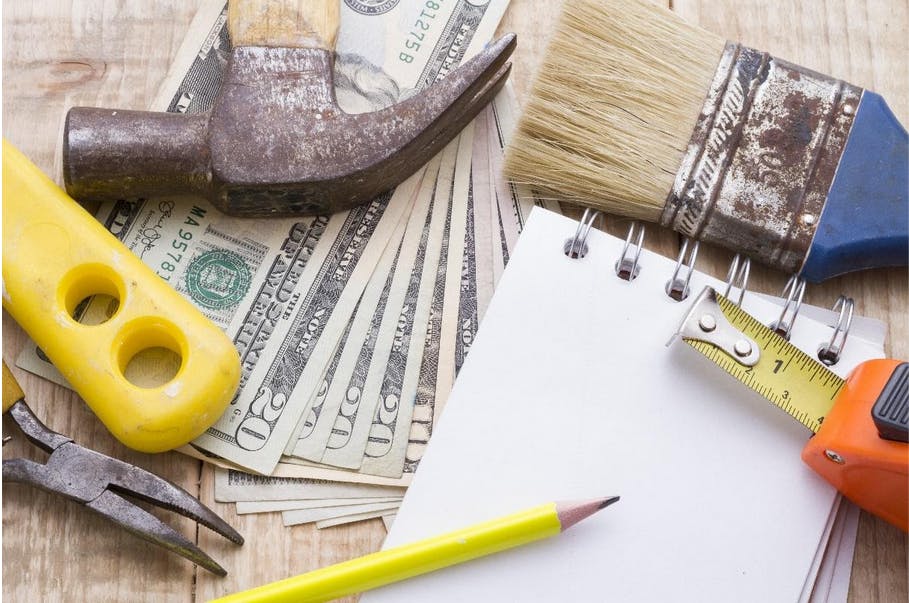”The bad news is nothing lasts forever,
The good news is nothing lasts forever.”
― J. Cole
The American rapper, also known as Jermaine Lamarr Cole, may have said it best: Nothing lasts forever. And while he may not have had home appliances, interiors or a roof in mind when writing those lyrics, Cole is correct when it comes to maintaining a home and its surroundings.
Fridges, furnaces and front doors only last for so long. But how long?
Did you know a microwave typically has the shortest shelf life among major appliances? Maybe that’s because we use it so much. (I know I do!) At the opposite end of the lifespan spectrum, a well-maintained roof tends to last the longest among items in and around the home – 30 or more years and up to three times that long if it’s made of slate.
Like an oil change for your car, a home needs attention throughout its life to ensure everything is “running” as best as expected. That includes yard work to keep vegetation away from the house, cleaning gutters to avoid damaging waterspouts from too much of nature’s droppings, to as simple as remembering to remove lint from the dryer.
Outside or in, the home requires TLC. Cleaning the bathroom on a regular basis – including tile and grout – can save hundreds or thousands of dollars on repairs while also preventing health issues for those who use the space. Tap water tasting funny? Maybe it’s time to change filters in the fridge and kitchen tap or have the water heater flushed to remove minerals and sediment.
Hardwood and engineered wood – both rising in popularity – can last for decades if maintained. That includes refinishing and resealing a floor about every 10 years to extend its life and improve the look. It doesn’t come cheap – about $1500-$2000 – but the job will make the home look great.
Carpets tend to last about 7-14 years, depending on the quality of the material, frequency of cleaning and foot traffic. Replacement costs start at about $1000 and go up and up.
To be sure, painting the home is one of the best ways to maintain a beautiful home. Doing it yourself will likely save thousands of dollars but if it’s a professional you want, then be ready to pay $3000+ per 1000 sq. ft. of house (interior and exterior) to complete a typical job in the PNW.
If your home calls for a stunning new entry statement with a handcrafted touch, wood may be the best material for you, priced from about $1000. And, unlike fiberglass or steel, wood doors require the most maintenance, needing a new paint job about every two years to avoid splitting or warping.
Own a wood deck and fence? They should be resealed and stained/painted every few years, at a cost of $750+ (if doing it yourself), excluding any cost to repair/replace some of the damaged boards. A wood fence can last about 15-20 years if maintained and replacing one can run you $2500-$5000 depending on the height and length.
Siding can last up to 50 years, though weather usually causes most to fade far sooner. Replacing it is a costly proposition but it’s a great way to improve the home’s insulation rating as well as offer excellent curb appeal when selling. Costs tend to start around $10,000 and homeowners who install it new will recoup about 75% of the cost when they sell, according to Remodeling magazine.
Gutter replacement is another positive move when planning to sell, and the cost is reasonable – starting around $1000. The gutters and spouts usually have a 20-year lifespan if cleared of debris from trees on a regular basis.
There isn’t much one can do to maintain a garage door except lubricate any moving parts and adding a coat of paint to the exterior when the color fades or chips. Replacing one after its 20-or-so-year lifespan will run about $1000-$1500 and tends to deliver a high return on investment because of its modernity and visual appeal.
Many people don’t think of insulation as a home-improvement project but like everything else the materials will break down over time. Most insulation – in the attic, walls or crawl space – lasts 25 or more years but mold and leaks can develop and lead to a replacement project that will run $1000 or more (and far more if other damage is discovered).
Windows generally last 25 or more years and eventually lose their ability to keep out the heat or cold. If fixing leaking edges or stuck-closed windows isn’t possible, an investment in a new set can run in the low five digits. Many factors are at play – the number of windows and their uniqueness (or straight from the factory), as well as double- or triple-glazed – but it’s typically worth the $7500+ investment.
These are national averages. Prices in Seattle/King County are typically higher, particularly with labor and materials shortages.
It was fellow Philly boy Benjamin Franklin who offered the axiom “an ounce of prevention is worth a pound of cure.” (Ben was way ahead of his time!) Take the time – and, yes, the money – to save on the long-term costs of maintaining the home.





